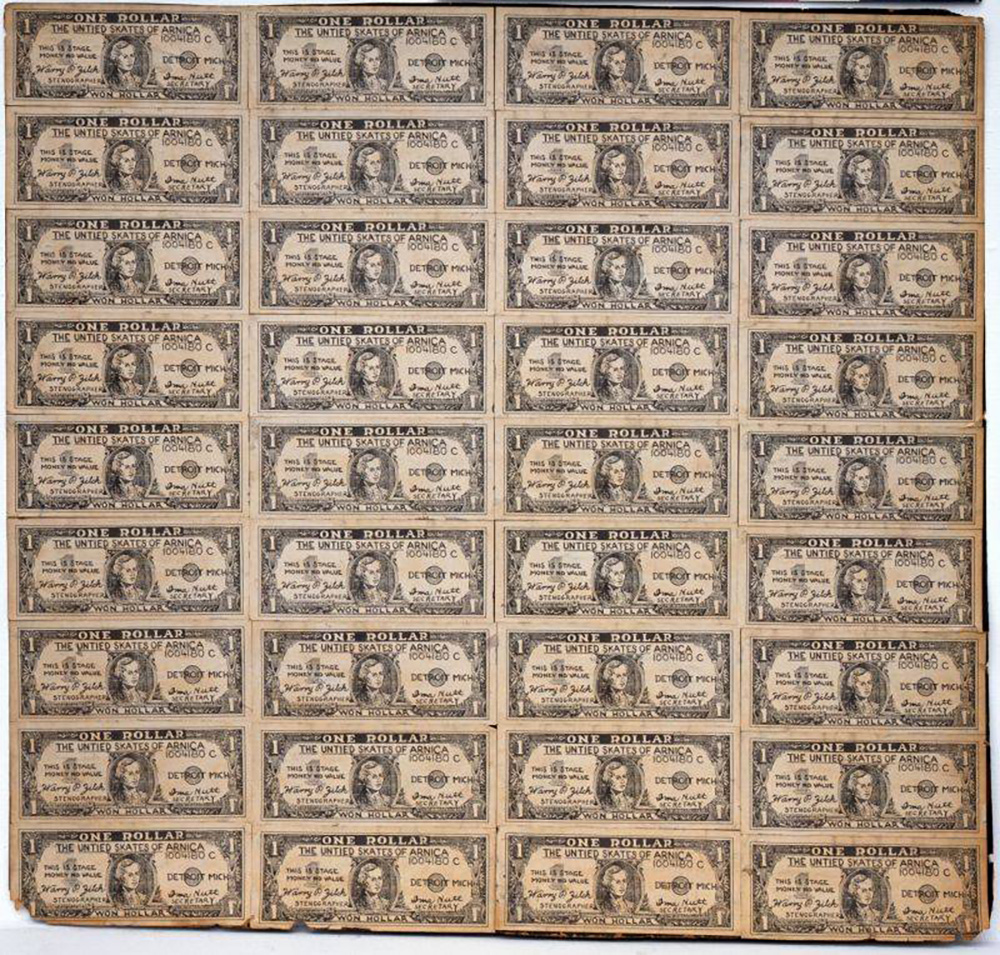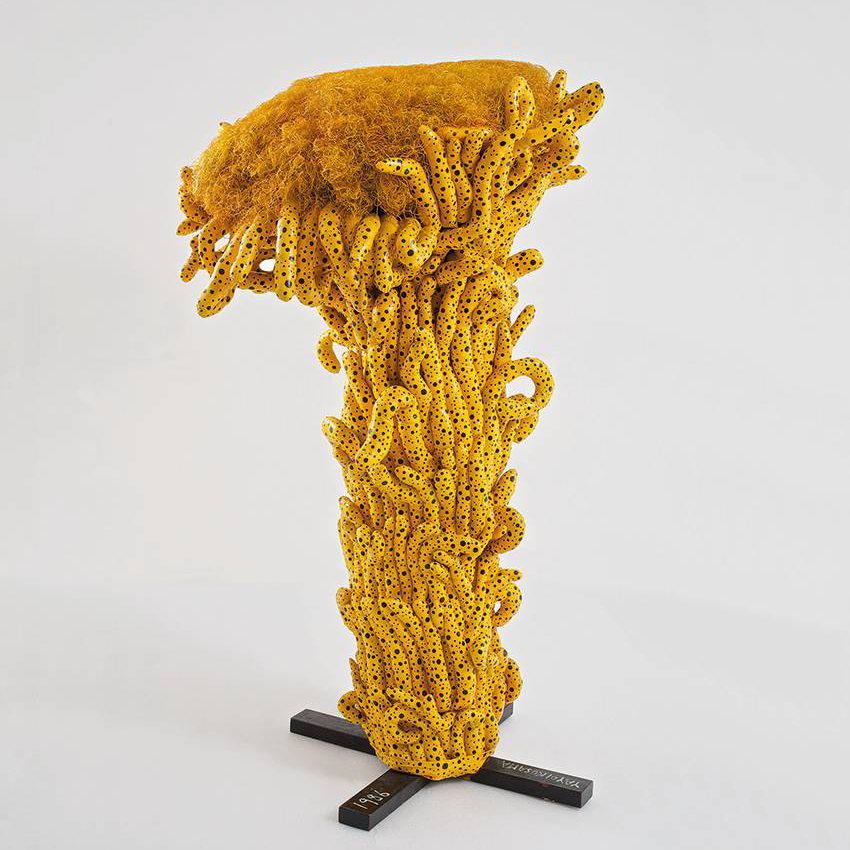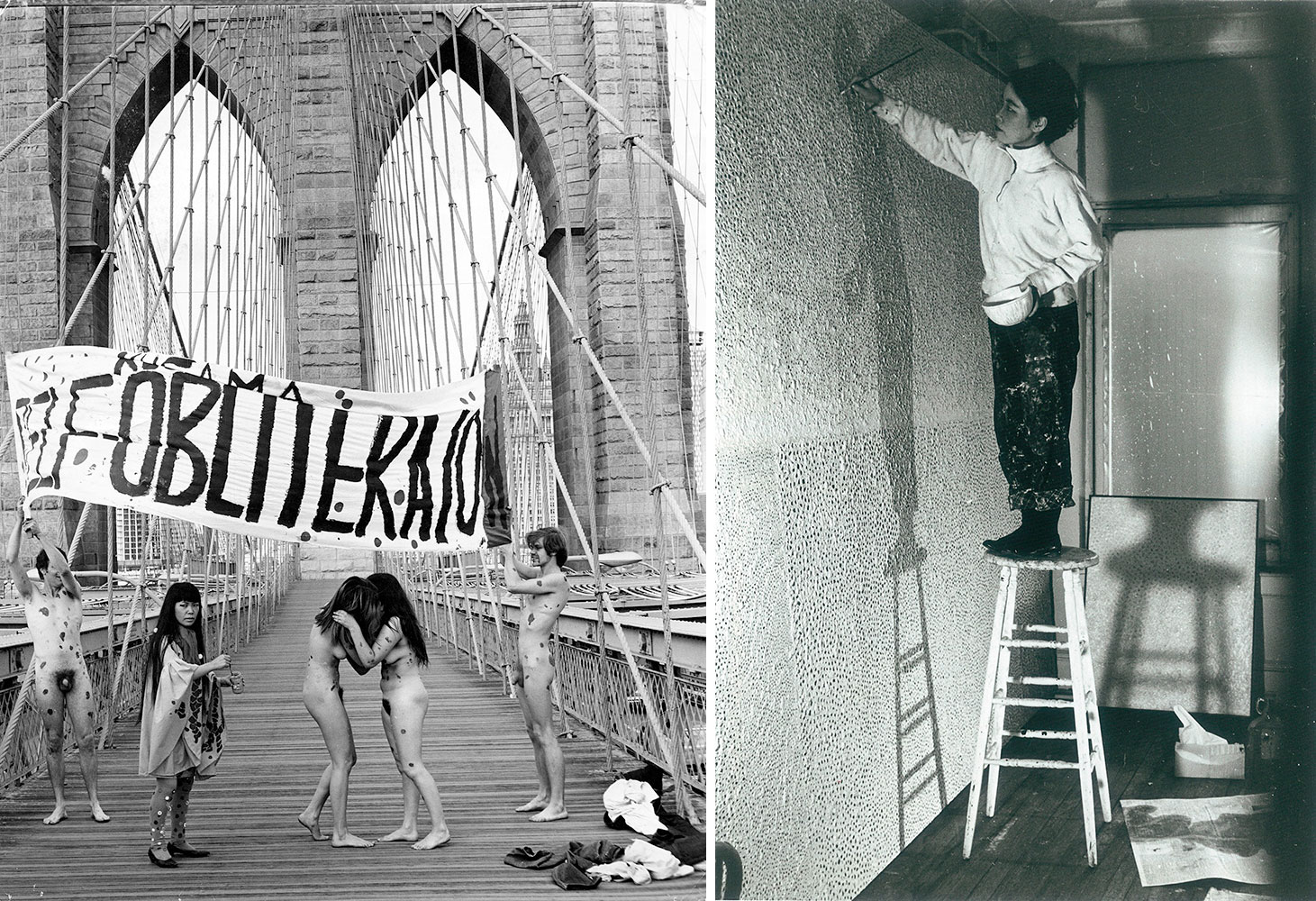ART-PRESENTATION: Yayoi Kusama-A Retrospective
 Yayoi Kusama has gained international attention since the sixties and is today one of the best-known artists worldwide. As a woman primarily working in performance art, her work was pioneering. Her artistic position is characterized by revolutionary interventions driven by the desire for an immersive union of body and artwork, and an urge to redefine the role of women in art.
Yayoi Kusama has gained international attention since the sixties and is today one of the best-known artists worldwide. As a woman primarily working in performance art, her work was pioneering. Her artistic position is characterized by revolutionary interventions driven by the desire for an immersive union of body and artwork, and an urge to redefine the role of women in art.
By Dimitris Lempesis
Photo: Gropius Bau Archive
In her works, Yayoi Kusama employs her own body as a placeholder, an act that anticipates today’s selfie culture. The striving to be in the picture is central to Kusama’s oeuvre – although her primary concern is the emotionalization and fusion of the self with art. It is an approach that enables viewers to empathize immersively. From this point of view, she can be seen as a precursor of self-integration that is commonly practiced today, especially on social media platforms. Yayoi Kusama’s first museum retrospective in Germany unfolds across almost 3000 m² and features nearly 300 works from the last 80 years. Subtitled “A Bouquet of Love I Saw in the Universe” the exhibition spans gouaches on paper, accumulative sculptures, happenings and fashion work, culminating in Kusama’s recent paintings and a reconstruction of the artist’s first “Infinity Mirror Room”, presented in New York in 1965. The installation “A Bouquet of Love I Saw in the Universe” (2021) was realised by Kusama uniquely for the vast historic atrium of the Gropius Bau, which erupts in a sea of large-scale inflatable tentacles for the exhibition’s duration. The exhibition features eight additional exhibition reconstructions from 1952 to 1983, alongside archival materials. Emphasizing Kusama’s lesser-known time in Europe, the exhibition also shows how Kusama’s performative works prefigured the self-staging of today’s social media and how she redefined the role of women in art. Throughout her career Kusama has always engaged deeply with the act of curating and, as such, has devised ground-breaking formats that can be experienced in this chronological presentation. The retrospective begins with shows that were mounted in her hometown of Matsumoto, “Yayoi Kusama Solo Exhibition” and “Yayoi Kusama Recent Works” (1952), in which the immersive nature of her practice was already beginning to take shape. These are followed by “Aggregation: One Thousand Boats Show” (1963), Kusama’s first environment in New York, anticipating her preoccupation with the idea of self-obliteration and infinity, which remains a central premise of her work. A key component of that presentation was a wooden rowing boat covered in white fabric forms, shaped like phalluses. This motif reappeared in the New York edition of the “Driving Image Show” (1964), grouped with other sculptural Accumulations, which consumed every corner of the gallery space. “Floor Show – Phalli’s Field” (1965), a show mounted in New York, comprised a mirrored room of approximately 25 m², containing polka-dot phallic forms of red and white fabric, arranged alongside further Accumulations.
This was Kusama’s first Infinity Mirror Room. A well-known image of Kusama shows her posing in this room wearing a red bodysuit; by this time, her artistic persona and presence had become an integral part of every exhibition and performance. Floor Show already contained all of the key elements that distinguish Kusama’s oeuvre today: fabric phalluses, polka dots and mirrors, all used to create an immersive experience. On the second stage of its journey in 1966, the “Driving Image Show” arrived in Essen, Germany. The white Accumulations were accompanied by objects covered with gold. Kusama spent a long time preparing for this exhibition, which established her artistic presence in Europe. That same year she also continued showing in New York, presenting her second Infinity Mirror Room as part of the exhibition “Kusama’s Peep Show” or “Endless Love Show”. Presenting a hexagonal room, visitors could only look into the space through two peep holes. There were no objects inside; instead, it evoked Kusama’s principle of obsessive infinity, purely by using lights that flashed in varying constellations. The last reconstruction at the Gropius Bau will offer a glimpse of Kusama’s later exhibition “Encounter of Souls” (1983), which was mounted at a venue in Tokyo – an endeavour by the artist to bring together key groups of works and different creative periods from her career up to that point. Framing these reconstructed exhibitions at the Gropius Bau, a timeline will set out Kusama’s presence in Germany and Europe, which has been previously neglected. In 1960, she was already showing her work alongside artists such as Lucio Fontana, Otto Piene and Yves Klein as part of the large-scale group show “Monochrome Malerei” in Leverkusen. This became the foundation for her growing reputation in Europe, and in the ensuing years she took part in exhibitions in Amsterdam, Bern, The Hague, Essen, Milan, Rotterdam, Stockholm, Turin and Venice. The research undertaken for the Gropius Bau retrospective lends a new perspective to the story of Kusama’s exhibitions and, as such, on the writing of her art historical legacy in Germany. This timeline is accompanied by documentary photographs and films that illustrate the performative dimension of Kusama’s work, contextualising her oeuvre in detail. Simultaneously it highlights the revolutionary nature of her combination of fashion, art and performance, not least her Happenings, which were, at times, rooted in the socio-political movements of the 1960s and 1970s. A key tenet of the exhibition focuses on Kusama’s ongoing self-enactment, blurring the boundaries between her body and surroundings, subject and object, inside and outside – a practice that was also reflected in the work of other artists who were active in the 1960s, when “life and art” began to converge. Kusama used her own body in her works as a placeholder, or in other words, as a proxy for the bodies of viewers. Such a gesture could be read as pre-empting today’s selfie culture – a will to be part of the action. Kusama’s own desire to merge with her works has always been associated with an obliteration of the self, an expansion into infinity, and remains so today.
Photo: Yayoi Kusama, Aggregation: One Thousand Boats Show, 1963, Rowboat with oars, covered by plaster castings in white cotton, a pair of lady’s shoes, 60.0 x 130.0 265.0 x cm, 2) oar: (l)169 x (h)12 x (b)13 cm, © Yayoi Kusama, Courtesy: Collection Stedelijk Museum Amsterdam
Info: Curator: Stephanie Rosenthal, Gropius Bau, Niederkirchnerstraße 7, Berlin, Duration: 23/4-1/8/2021, Days & Hours: Mon, Wed & Fri-Sun 10:00-19:00, thu 10:00-21:00, www.berlinerfestspiele.de








Right: Yayoi Kusama, ”Anti-War“ naked happening and flag-burning on the Brooklyn Bridge, 1968, © Yayoi Kusama
